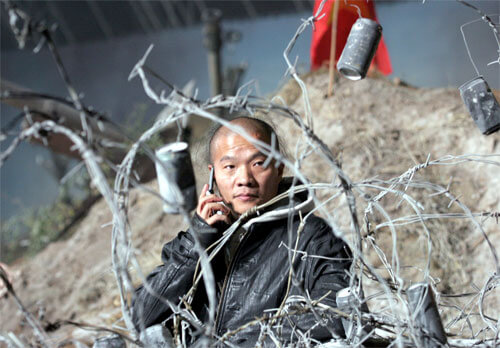Born in Daqing, Heilongjiang Province, China 1966
1993: Oil Painting Department of Sichuan Academy of Fine Arts, Sichuan, China
Lives and works in Beijing since 1993
Awards: 2006 Outreach Award from Rencontres de la Photographie, Arles, France
Wang Qingsong graduated from the Oil Painting Department of the Sichuan Academy of Fine Arts and currently lives and works in Beijing. After starting his career as an oil painter engaged in the Gaudi movement, he began taking highly staged photographs that explore the influence of Western consumer culture in China. In more recent works he has explored political and social themes including the struggles of the migrant population and Chinese diplomacy.
His photographs are known for their massive scale, deep symbolism and careful staging, which can sometimes take several weeks and involve up to 300 extras. Although photography is his main medium, he has explored performance and video art in more recent years. Qingsong’s work has been presented at prestigious galleries, museums and art fairs across the globe including the 55th Venice Biennale China Pavillion (Venice), the International Centre of Photography (NY), the Hammer Museum (Los Angeles), the Victoria and Albert Museum (London), the 42nd Rencontres de la Photographie (Arles), the Daegu Art Museum (Seoul), MOCA (Taipei), the Rockbund Art Museum (Shanghai) and the Mori Art Museum (Tokyo).
Wang Qingsong is a contemporary Chinese artist whose large-format photographs address the rapidly changing society of China. His photographs, appearing at first humorous and ironic, have a much deeper message. Critical of the proliferation of Western consumerism in China, his, Competition (2004), depicts the artist standing with a megaphone in front of a city hall covered in advertisements for brands such as Citibank, Starbucks, and Art Basel.
"I think it is very meaningless if an artist only creates art for art's sake," he said.
"I think it would be absurd for an artist to ignore what's going on in society." Born in 1966 in Heilongjiang Province, China, Wang studied at the Sichuan Academy of Fine Arts. Although he was trained as a painter, Wang began taking photographs in the 1990s as a way to better document the tension of cultural shifts. The artist's works have been in exhibitions at the Hammer Museum in Los Angeles and the National Gallery of Victoria in Melbourne. Wang currently lives and works in Beijing, China.
Source: Artnet
